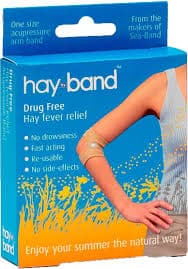Hayfever:

Hay fever, also called allergic rhinitis, causes:
- cold-like signs and symptoms
- a runny nose,
- sneezing
But unlike a cold, hay fever isn’t caused by a virus.
Hay fever is caused by an allergic response to outdoor or indoor allergens, such as pollen, dust mites, or tiny flecks of skin and saliva shed by cats, dogs, and other animals with fur or feathers (pet dander).
Besides making you miserable, hay fever can affect your performance at work or school and generally interfere with your life. But you don’t have to put up with annoying symptoms. You can learn to avoid triggers and find the right treatment.
Hay fever signs and symptoms can include:
• Runny nose and nasal congestion
• Watery, itchy, red eyes (allergic conjunctivitis)
• Sneezing
• Cough
• Itchy nose, roof of mouth or throat
• Swollen, blue-coloured skin under the eyes (allergic shiners)
• Postnasal drip
• Fatigue
Seasonal factors
Your hay fever signs and symptoms may start or worsen from March of each year.
Triggers include:
• Tree pollen, which is common in early spring.
• Grass pollen, which is common in late spring and summer.
• Ragweed pollen, which is common in autumn.
Treatment:
• It’s best to limit your exposure to substances that cause your hay fever as much as possible. If your hay fever isn’t too severe, over-the-counter medications may be enough to relieve symptoms. For worse symptoms, you may need prescription medications.
• Many people get the best relief from a combination of allergy medications. You might need to try a few before you find what works best.
• If your child has hay fever, talk with your pharmacist about treatment. Not all medications are approved for use in children. Read labels carefully.
• Antihistamines. These preparations are usually given as tablets. However, there are also antihistamine eyedrops. Antihistamines can help with itching, sneezing and a runny nose but have less effect on congestion. They work by blocking a symptom-causing chemical released by your immune system during an allergic reaction (histamine).Over-the-counter tablets include loratadine (Clarityn/Lorat), cetirizine (Zirtek Allergy/Cetrine). Antihistamine eyedrops such as Opticrom help relieve eye itchiness and eye irritation caused by hay fever.
• Decongestants. These medications are available in over-the-counter and prescription liquids, tablets and nasal sprays. Over-the-counter oral decongestants include pseudoephedrine (Sudafed). Nasal sprays including decongestant nasal sprays are also very effective at drying up nasal secretions.Oral decongestants can cause a number of side effects, including increased blood pressure, insomnia, irritability and headache. Don’t use a decongestant nasal spray for more than two or three days at a time because it can actually worsen symptoms when used continuously (rebound congestion).
Acupuncture-led Treatments:
The Hay-band, developed by leading acupuncturists is an excellent treatment of hayfever symptoms and can be worn safely by all adults and children over 3 yrs. It is not suitable in pregnancy. It is worn as an armband around the elbow

